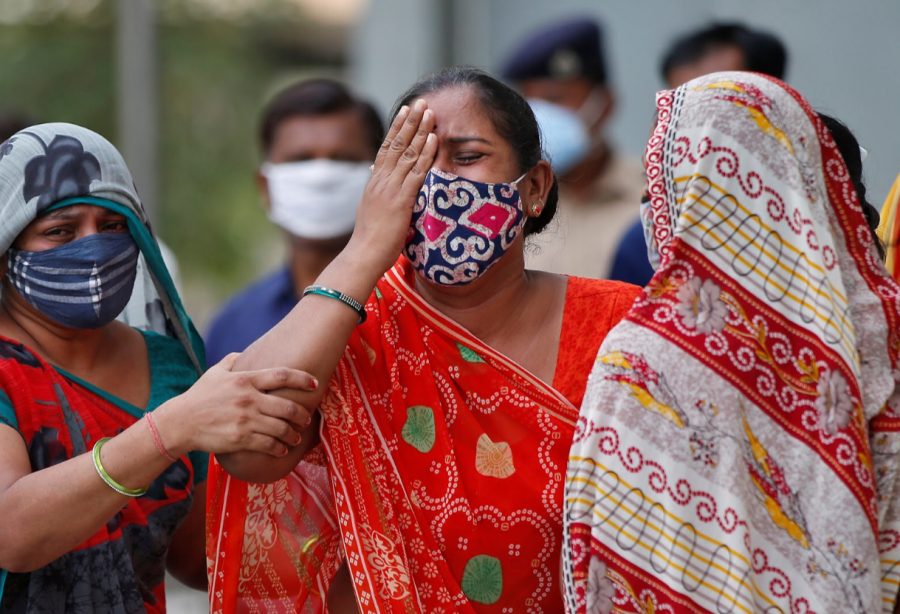COVID Crisis: India Suffering From Worst COVID Spike of the Pandemic
May 28, 2021
As coronavirus restrictions are beginning to disappear across the country due to mass vaccinations, the last thing we expected was another massive outbreak. But across the Pacific Ocean, India is currently experiencing the most devastating coronavirus spike that the world has seen since the start of this pandemic. According to the World Health Organization, a new, more infectious strain of COVID is responsible for this outbreak and has spread to 49 countries. From September to February, COVID infections were actually falling throughout India. On February 15, however, daily new infections hit an all time low of 9,121, and then began to rise dramatically. Jump forward to May 11, and India had 348,421 new infections in one day. Throughout the entire pandemic, India has had 23.3 million infections and 254,000 deaths.
While vaccines are being distributed throughout India, the rate of distribution has slowed down since March, going from around 3 million doses per day to 2 million doses per day. Additionally, over 20 hospitals have reported running out of medical oxygen, which means that even people who are sent to the hospital are dying. These problems are occurringp throughout the country, but reports are only just coming in about the effects COVID has had on the poorer rural communities. Dozens of bodies have been found floating in the Ganges River, most likely due to people not being able to afford burials or cremations.
When crises occur, it is expected that public officials will step forward to lead their nation. Unfortunately, many Indians are frustrated with their Prime Minister, Narendra Modi. Modi has not spoken over television since April 20, but since then he has held a large political rally to help people from his party get elected to local office. On April 20, Modi stated that there would not be another nationwide lockdown like there was at the beginning of the pandemic. This decision could have made the situation worse however, because the month of April is the only month for the popular Kimbh Mela pilgrimage. Throughout the month, pilgrims travel across the country to gather together and bathe in the Ganges River. While Modi did state that the pilgrimage should end early, his statement came too late as thousands of pilgrims had already tested positive. Additionally, according to an Indian investigative journalism magazine, an official who recommended that Modi cancel the pilgrimage was immediately fired.
Even as treatments are beginning to flow into India, even more problems are arising. Throughout March and April, diabetic people who recovered from COVID using very strong steroids have been reporting mucormycosis or ‘black fungus’ infections. This fast-acting infection begins soon after recovering from COVID and can be lethal within two weeks. What makes it so dangerous is the fact that the initial signs of the infection are not very severe, but it reaches the brain very quickly. On top of this, even if the infection is caught, the only way to remove it is to remove one or both of the patient’s eyes and/or their upper jaw. So far, the mortality rate of the infection is 50%, and over 300 people have been infected.

